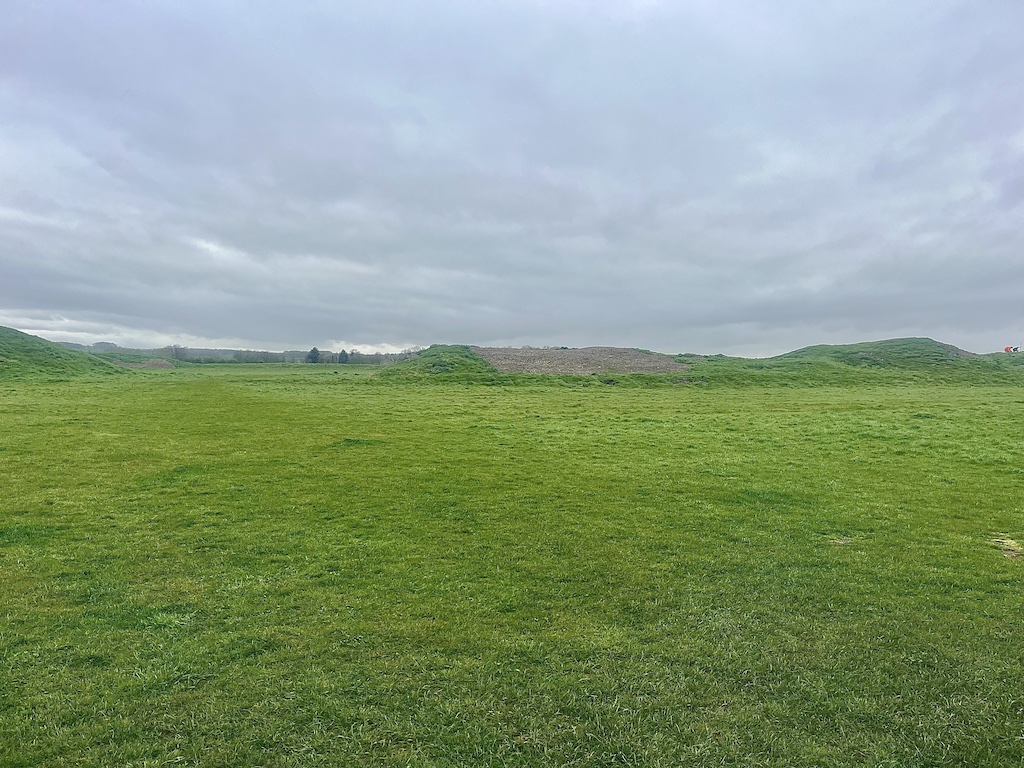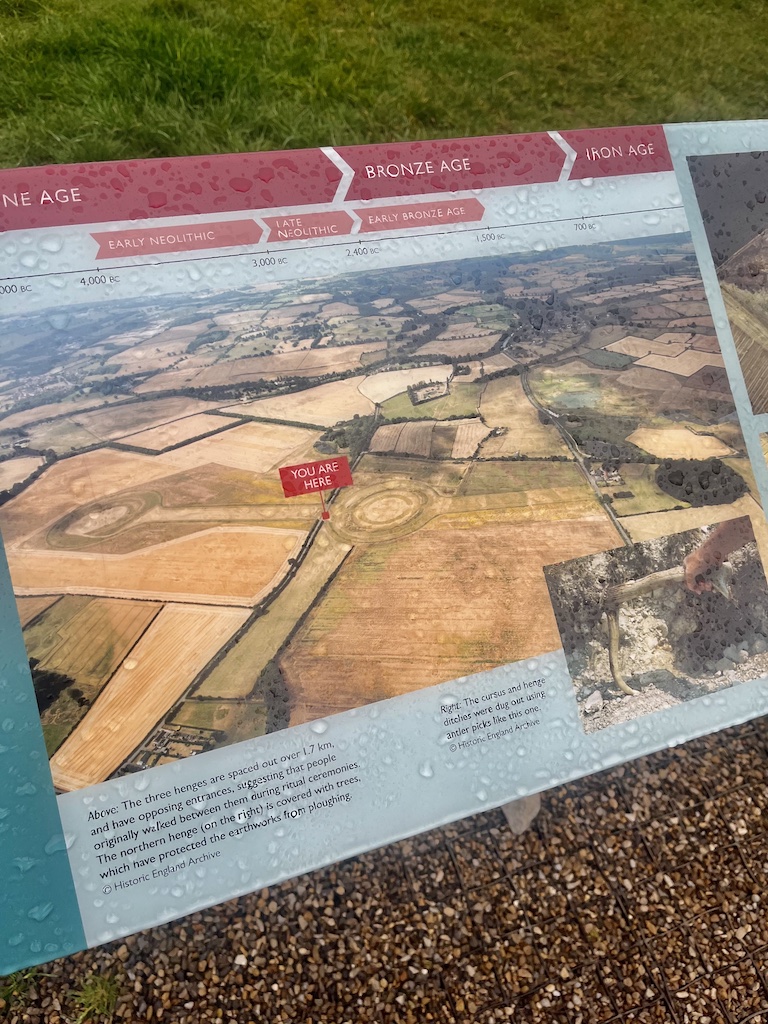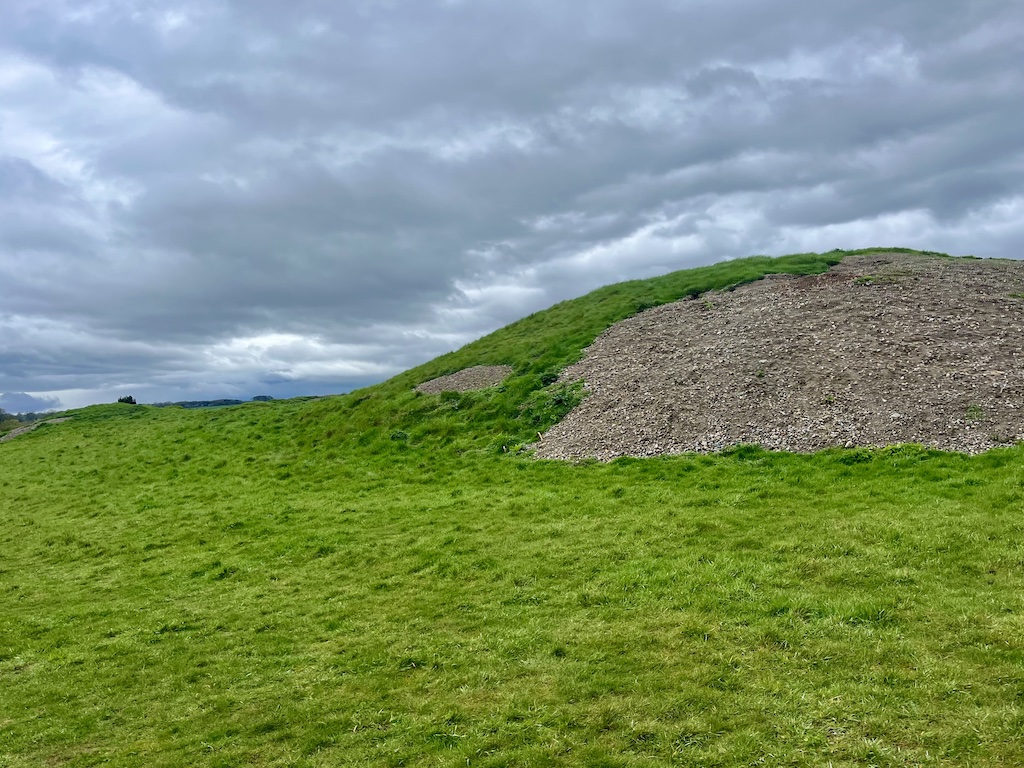
11 Apr Going back in time on a wet Tuesday to the Stone Age!

This week I went on a guided tour of Thornborough Henges near Ripon. You may have read a while back that English Heritage had purchased the third henge for the nation, having already secured the first two.
English Heritage consider this sight one of the most important prehistoric sites in Britain so I went to find out more!
To be honest, you do need to use your imagination a little but that doesn’t mean it isn’t a fascinating place to visit. The earliest part of the site is 5000 years old and the henges were constructed 500 years later. What happened in those 500 years? We have no idea! But to put it in context that’s the same amount of time as travelling back to when King Henry VIII was on the throne!
We can assume that the site was of significance during that time. Interestingly there is not any real evidence of any settlement there but it was probably on a trading route as plenty of axes from the Lake District have been found at the site. It’s also very near to the current A1 road – this roughly follows a roman road so it is possible there was already an established route from north to south.

So what’s a henge? When you hear that word, most people think of Stonehenge but that is not strictly actually a henge! The definition is a circular or oval bank and ditch monument usually with the bank on the outside with at least one entrance. They were built in the later neolithic period and into the Bronze age. As the ditch is on the inside we can assume they were not built for defence as then the ditch would be on the outside so they were probably ceremonial.
The banks at Thornborough would have been 4-5 metres high and it is thought the inside was plastered with locally found gypsum which would have made them brilliant white. They stretch out for over a mile with each henge being about 250 metres in diameter. Can you imagine the people power it would have taken to construct these? Tools were still in their infancy and most of it would have been dug out using deer antlers.
Even more impressively the henges are aligned with the star formation of Orion’s Belt and the southern entrances of the central and northern henges aligned with the midwinter solstice sunrise. Our ancestors clearly knew what they were doing!
If you wish to visit I’d recommend heading to English Heritage’s website to book on a tour as the enthusiastic guides really bring the place to life – even on a wet and windy April morning!


